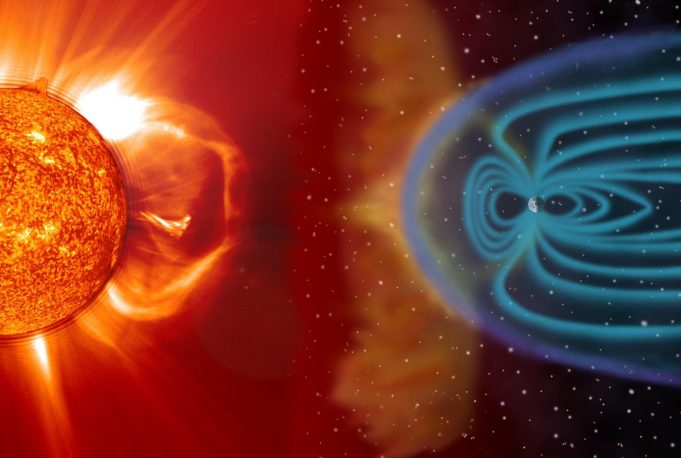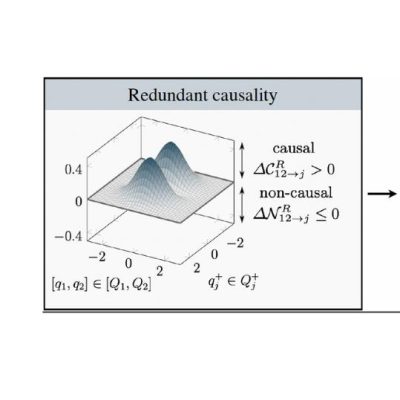
MIT-led team to develop software to help forecast space storms
On a moonless night on Aug. 28, 1859, the sky began to bleed. The phenomenon behind the northern lights had gone global: an aurora stretching luminous, rainbow fingers across time zones and continents illuminated the night sky with an undulating backdrop of crimson. From New England to Australia, people stood in the streets looking up with admiration, inspiration, and fear as the night sky shimmered in Technicolor. But the beautiful display came with a cost. The global telegraph system — which at the time was responsible for nearly all long-distance communication — experienced widespread disruption. Some telegraph operators experienced electric shocks while sending and receiving messages; others witnessed sparks flying from cable pylons. Telegraph transmissions were halted for days.
The aurora and the damage that followed were later attributed to a geomagnetic storm caused by a series of coronal mass ejections (CMEs) that burst from the sun’s surface, raced across the solar system, and barraged our atmosphere with magnetic solar energy, wreaking havoc on the electricity that powered the telegraph system. Although we no longer rely on the global telegraph system to stay connected around the world, experiencing a geomagnetic storm on a similar scale in today’s world would still be catastrophic. Such a storm could cause worldwide blackouts, massive network failures, and widespread damage to the satellites that enable GPS and telecommunication — not to mention the potential threat to human health from increased levels of radiation. Unlike storms on Earth, solar storms’ arrival and intensity can be difficult to predict. Without a better understanding of space weather, we might not even see the next great solar storm coming until it’s too late.
To advance our ability to forecast space weather like we do on weather Earth, Richard Linares, an assistant professor in the Department of Aeronautics and Astronautics (AeroAstro) at MIT, is leading a multidisciplinary team of researchers to develop software that can effectively address this challenge. With better models, we can use historical observational data to better predict the impact of space weather events like CMEs, solar wind, and other space plasma phenomena as they interact with our atmosphere. Under the Space Weather with Quantified Uncertainties (SWQU) program, a partnership between the U.S. National Science Foundation (NSF) and NASA, the team was awarded a $3 million grant for their proposal “Composable Next Generation Software Framework.”
“By bringing together experts in geospace sciences, uncertainty quantification, software development, management, and sustainability, we hope to develop the next generation of software for space weather modeling and prediction,” says Linares. “Improving space weather predictions is a national need, and we saw a unique opportunity at MIT to combine the expertise we have across campus to solve this problem.”
Linares’ MIT collaborators include Philip Erickson, assistant director at MIT Haystack Observatory and head of Haystack’s atmospheric and geospace sciences group; Jaime Peraire, the H.N. Slater Professor of Aeronautics and Astronautics; Youssef Marzouk, professor of aeronautics and astronautics; Ngoc Cuong Nguyen, a research scientist in AeroAstro; Alan Edelman, professor of applied mathematics; and Christopher Rackauckas, instructor in the Department of Mathematics. External collaborators include Aaron Ridley (University of Michigan) and Boris Kramer (University of California at San Diego). Together, the team will focus on resolving this gap by creating a model-focused composable software framework that allows a wide variety of observation data collected across the world to be ingested into a global model of the ionosphere/thermosphere system.
“MIT Haystack research programs include a focus on conditions in near-Earth space, and our NSF-sponsored Madrigal online distributed database provides the largest single repository of ground-based community data on space weather and its effects in the atmosphere using worldwide scientific observations. This extensive data includes ionospheric remote sensing information on total electron content (TEC), spanning the globe on a nearly continuous basis and calculated from networks of thousands of individual global navigation satellite system community receivers,” says Erickson. “TEC data, when analyzed jointly with results of next-generation atmosphere and magnetosphere modeling systems, provides a key future innovation that will significantly improve human understanding of critically important space weather effects.”
The project aims to create a powerful, flexible software platform using cutting-edge computational tools to collect and analyze huge sets of observational data that can be easily shared and reproduced among researchers. The platform will also be designed to work even as computer technology rapidly advances and new researchers contribute to the project from new places, using new machines. Using Julia, a high-performance programming language developed by Edelman at MIT, researchers from all over the world will be able to tailor the software for their own purposes to contribute their data without having to rewrite the program from scratch.
“I’m very excited that Julia, already fast becoming the language of scientific machine learning, and a great tool for collaborative software, can play a key role in space weather applications,” says Edelman.
According to Linares, the composable software framework will serve as a foundation that can be expanded and improved over time, growing both the space weather prediction capabilities and the space weather modeling community itself.
The MIT-led project was one of six projects selected for three-year grant awards under the SWQU program. Motivated by the White House National Space Weather Strategy and Action Plan and the National Strategic Computing Initiative, the goal of the SWQU program is to bring together teams from across scientific disciplines to advance the latest statistical analysis and high-performance computing methods within the field of space weather modeling.
“One key goal of the SWQU program is development of sustainable software with built-in capability to evaluate likelihood and magnitude of electromagnetic geospace disturbances based on sparse observational data,” says Vyacheslav Lukin, NSF program director in the Division of Physics. “We look forward to this multidisciplinary MIT-led team laying the foundations for such development to enable advances that will transform our future space weather forecasting capabilities.”

